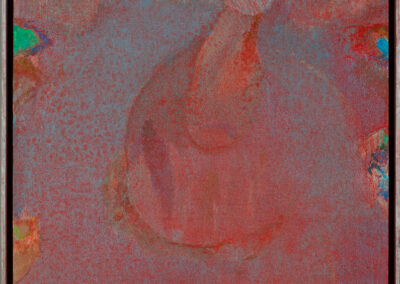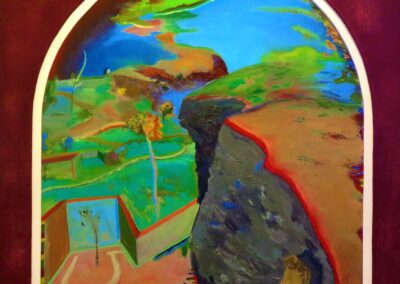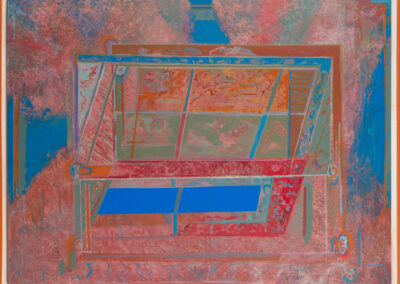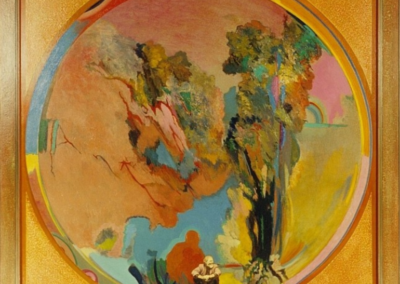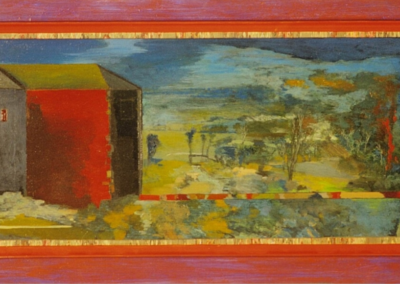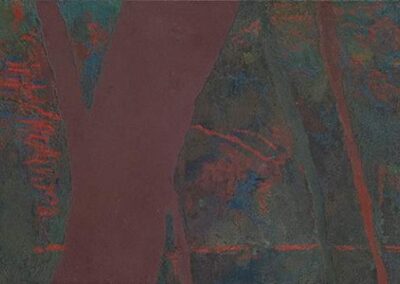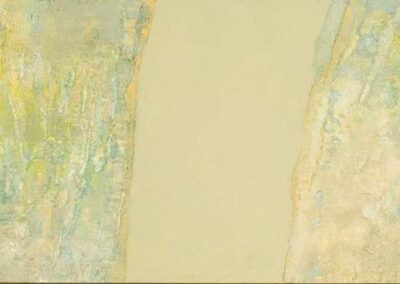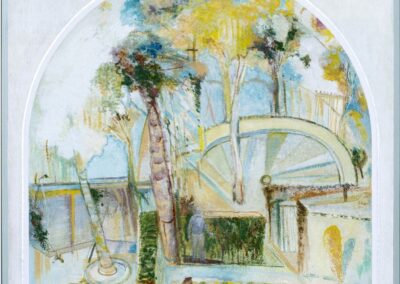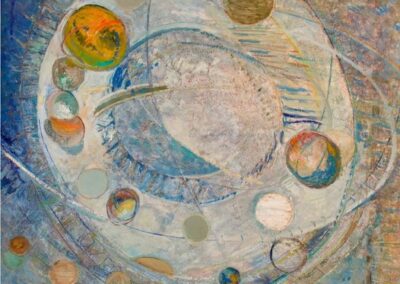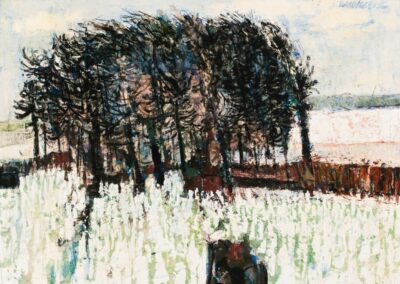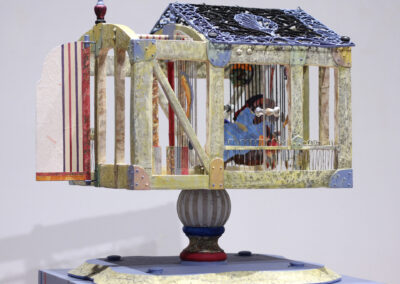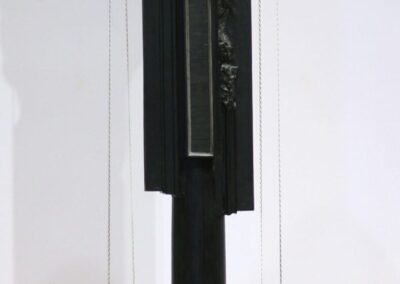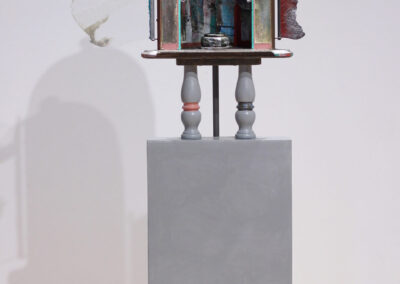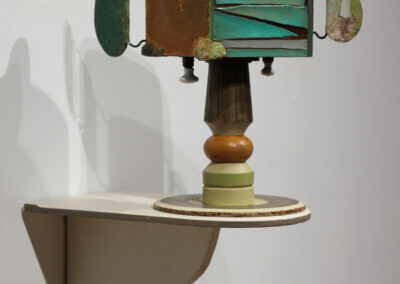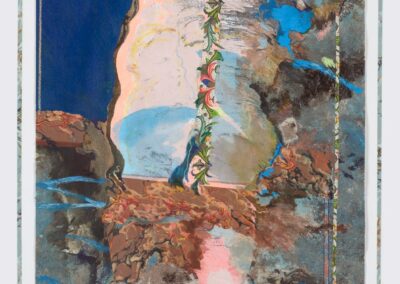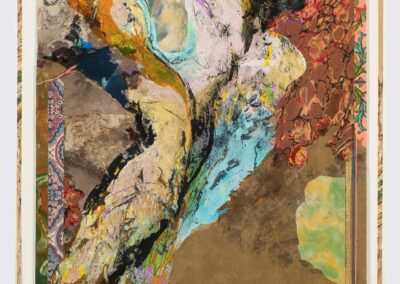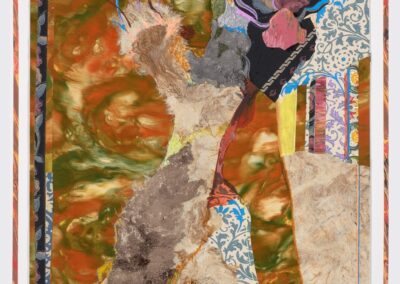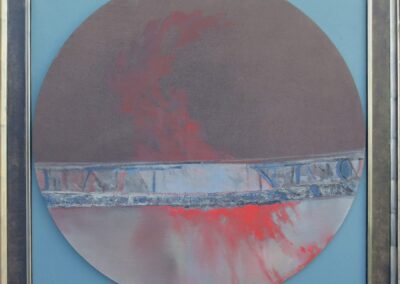The next Artist You Need To Know is Tony Urquhart (1934 – 2022).
Urquhart was a Canadian painter who was a groundbreaking and widely recognized abstractionist in the 1950s and 1960s and instrumental in helping to define Canadian abstract painting. He is also renowned for his “box” sculptures which were heavily influenced by religious art and architecture. Urquhart was associated with both the Toronto Painters (usually seen at The Isaacs Gallery in that city) and The Heart of London group (based out of London, ON) that included contemporaries such as Jack Chambers, Greg Curnoe and Murray Favro.
“All the works of art I most admire seem to have one thing in common: an “after-image” – something about the painting that lingers in the mind and makes one want to come back to it.”
Anthony Morse Urquhart was born and grew up in Niagara Falls, ON : he attended the Albright Art School and the State University of New York (SUNY) in Buffalo (1954 and 1958, respectively). He also attended the Yale Norfolk Summer School in New Haven. Urquhart became one of the stable of artists at the renowned Isaacs Gallery in Toronto. Many of the most significant Canadian artists and painters showed in that space, including Joyce Wieland and Graham Coughtry (both previously featured Artists You Need To Know).
He would become the first artist in residence at Western University in London, ON (1960) : Urquhart was also a full professor of Fine Art at the University of Waterloo. He taught drawing, painting and printmaking and also served as the head of the department on several occasions. His educational career at Waterloo was an impressive tenure form 1972 to 1999.
Of equal significance to the legacy of his teaching and artwork was his advocacy for artists. In 1968 alongside fellow artists Jack Chambers and Kim Ondaatje Urquhart established Canadian Artists’ Representation / Le Front des artistes Canadiens (CARFAC). Often referred to as an ‘artists’ union’, CARFAC was instrumental in creating – and demanding, when necessary – a fee schedule for public museum and gallery exhibitions of contemporary artists. CARFAC rates and fees are still a crucial framework and support for artists today, from artist run centres to public galleries to universities.
During his time with The McIntosh Gallery in London (as part of his aforementioned residency at Western University) Urquhart focused on platforming some of the fine artists in the London community by mounting exhibitions by emerging artists like Greg Curnoe, Walter Redinger, Ed Zelenak, and John Boyle. From centered: “The University’s McIntosh Art Gallery opened in 1942 and was the first university art gallery in Ontario. But it wasn’t until Urquhart was appointed as an artist-in-residence that the gallery took off. Essentially, Urquhart ran the place for four years starting in 1960, mounting approximately ten shows each year and was one of a small handful of artists responsible for generating the excitement and community engagement that garnered national acclaim for the growing London art scene.”
This would lead to one of the highlights of his career – both in terms of his own practice and his sense of community in London – in 1968-69 when he participated in the National Gallery of Canada touring exhibition The Heart of London. This show was instrumental in both shaping and defining the art movement known as London Regionalism.
He consistently exhibited his works nationally and internationally. His first retrospective took place In 1970 – when Urquhart was still in his thirties – at the London Regional Art Gallery (now Museum London). Urquhart would be included in 1993’s major exhibition from the National Gallery titled The Crisis of Abstraction in Canada : and a touring exhibition (initiated by Museum London and the Art Gallery of Newfoundland in 2002) titled Power of Invention : Drawings from Seven Decades by Tony Urquhart would tour across Canada.
From here : “Tony Urquhart’s paintings and box sculptures are mysterious and challenging, products of a brush guided by the hand of an artist with a dazzling colour sensibility and visions lingering at the borders of reality and fiction.”
You can enjoy a short video all about Urquhart here.
Urquhart was married to the writer Jane Urquhart (née Carter, his second marriage) : they had a daughter Emily who also is a writer (of nonfiction) and she penned a book about her father titled The Age of Creativity: Art, Memory, My Father, and Me. It was published in 2020 and was praised not just for being a fine vignette into her father’s life and work but also for its handling of the issues of age and creativity.
One of Urquhart’s children from his first marriage would follow in his footsteps and become a well known artist as well : more about Aidan Urquhart’s art and aesthetic can be seen here.
Urquhart’s art can be found in the collections of most major Canadian public art galleries and museums: because of his ongoing contribution to London’s visual arts community, Museum London has over 100 of his works alone. On the international stage, Urquhart’s artworks are also in the collection of New York’s Museum of Modern Art; the Victoria and Albert Museum in London, England; the Hirshorn Collection of the Smithsonian Institution in Washington, D.C.; the Bibliotec National in Paris; the Museo Civico in Lugano; and the Walker Art Center in Minneapolis.
Tony Urquhart was named to the Order of Canada in 1995. In 2009, he and Kim Ondaatje won the Governor General’s Award in Visual and Media Arts as well as the CARFAC Outstanding Contribution Award. In 2016, he was awarded an LL.D. by Carleton University, Ottawa.
He passed away at the age of 87 from complication due to a fall in 2022 : in his last years Urquhart had suffered from dementia, but this had not slowed his practice (the aforementioned book by his daughter Emily offers a considered and empathetic accounting of this time). Urquhart is buried in the Drummond Hill Cemetery in Niagara Falls, Ontario. A fine accounting of his life and legacy from The Toronto Star can be seen here.
In a tribute to Urquhart’s life after passing, Professor of Art History and Visual Culture Joan Coutu (a colleague of Urquhart’s at the University of Waterloo) offered the following : “Tony’s art is about other worlds, and is full of thresholds, paths, and light. His drawings, paintings, prints, and sculptures invite us to look inside, to cross the threshold, walk down the path, and feel the warmth of the light. At first glance they are compellingly beautiful, yet they soon become unnerving. Our journey into them becomes more complex as we walk into the deep spaces of the subconscious. That complexity makes great art.”

